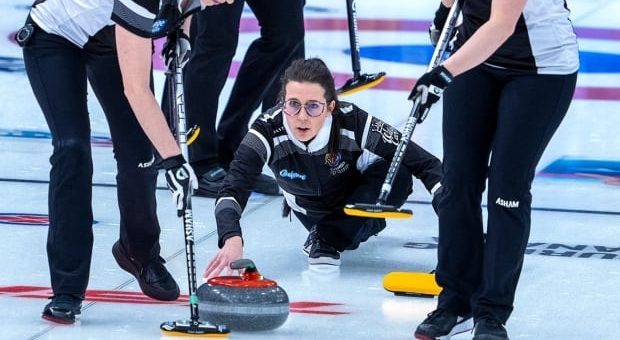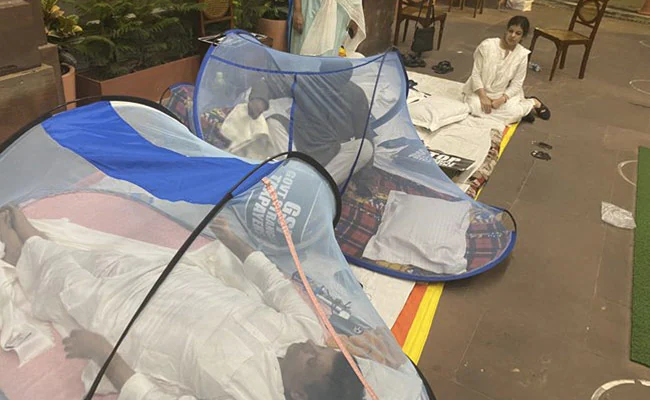
With three members of Team Lawes trying to balance pregnancy with curling at times this season, Selena Njegovan was pleased her squad received an exemption to add an out-of-province replacement player for the national championship.
What was disappointing, Njegovan said, was that only the top five teams in the national rankings were allowed to apply.
The Curling Canada decision to limit eligibility for a pregnancy exemption at the Scotties Tournament of Hearts was a hot topic in the sport’s circles after details were released with Tuesday’s draw.
“It’s just not fair to the other women and the other teams,” Njegovan said from Winnipeg.
After sticking to its decision for three days despite mounting pressure, a Curling Canada about-face finally came Friday afternoon.
In a one-line post on its Twitter account, the organization said all 18 teams would now be eligible. Teams were given about 48 hours to advise Curling Canada of their interest.
Please note that we have reached out to all 2023 Canadian women’s championship participants to offer the 2024 pregnancy/parental leave policy.
—@CurlingCanada
Njegovan said that from the start of her team’s interactions with Curling Canada on the subject, her rink maintained that all teams — regardless of ranking — should be eligible.
Curling Canada originally said in its release that only top-five teams could apply “because their ability to replace a player with someone with an equal level of ability and commitment is limited.”
The backlash was swift, with several high-profile members of the curling community criticizing the decision.
Late Thursday, Curling Canada updated its rules to say that all teams could apply for an exemption at the national playdowns, but only starting in 2024.
Curling Canada CEO Kathy Henderson — who has maintained that it’s a “residency exemption” despite the wording in the news release — said Thursday that it was likely too late to change the rule for the 2023 Scotties. She noted that teams had already played at provincial/territorial championships and named their lineups.
“It was meant to be in addition to an already progressive pregnancy and parental leave policy,” she said on a video call. “There was a lot of nuance in it because we certainly in no way, shape or form want to be discriminatory.
“What we’re trying to make sure is that we are balancing off the needs of funded athletes to be able to get themselves on to the podium with residency requirements that are part of an interprovincial and inter-territory competition.”
The national championship is set to begin Feb. 17 in Kamloops, B.C.
‘The greater good’
“I know that it’s for the greater good that if we can get everyone this exemption, it is worth it to go through this,” Njegovan said.
She added the team first reached out to Curling Canada after she went public with her pregnancy last year. When told in late December that there would be a top-five cutoff, they voiced their opinion that it was unfair.
“We want it to be for all women, which we reiterated from the beginning,” she said. “But they stuck with the five teams rule.”
Under residency rules, at least three of four players on a team must live or have birthright status in their respective province or territory. Only one free agent is allowed unless an exemption is granted.
Pregnancies common on curling scene
Pregnancies are quite common on the curling scene, especially in the first year of a quadrennial. The sixth-ranked team skipped by Casey Scheidegger, for example, has two pregnant players on its roster but just missed the top-five cut.
“It’s really disappointing to me that Curling Canada is not supporting all of their athletes,” McEwen said before the organization announced the rule change. “It’s like we’re making these rules and [for] all these women who are pregnant or trying to get pregnant, it’s hard.
“We should be supporting our athletes and we shouldn’t be restricting them from opportunities. Everyone should have an equal opportunity.”
Njegovan, who’s due in late March, called the recent developments part of a “gruelling process.”
Making matters worse for Njegovan, who has been cleared to travel, was news that she’d have limited in-venue access if she decides to attend the competition at Sandman Centre.
In a Twitter post Monday announcing that Laura Walker would be filling in, Team Lawes said it planned to have Njegovan on site in a support role alongside coach Lisa Weagle.
However, the Curling Canada news release a day later — in an unusually specific mention — said that Njegovan was “not expected to travel to Kamloops.”
Team Lawes originally planned for Njegovan to watch games from ice level, come out for timeouts and help the team during practice sessions.
“I can come and sit in the stands but I can’t sit on the bench,” she said, adding the decision was “very upsetting.”
Njegovan added she hasn’t seen any rules or documents from Curling Canada regarding involvement with a team at nationals when a player is on pregnancy leave.
“We can’t find it anywhere,” she said. “We’ve spoken to some lawyers as well and they don’t see it in the policy either. So I don’t really know where it’s coming from.”
Curling Canada said Friday that since Njegovan is on pregnancy leave, she won’t have access to the field of play or coach area. The organization also supplied a line from its pregnancy/parental leave policy.
Kyle Jahns, Curling Canada’s communication and media relations manager, said the document doesn’t make specific mention to access, but does “indicate that the athlete is being replaced for that period of time.”
“During that period of pregnancy/parental leave, the player is not an active member of the team,” he said in an email.
Jahns added that Njegovan would be provided with a general venue accreditation if she decides to attend and is welcome to participate in off-ice activities.
“Obviously the girls make me feel like I’m part of the team but it’s going to feel a lot different if I’m sitting in the stands acting basically as a fan,” Njegovan said.
“So that’s just something that I need to decide — if I still want to go or not.”












